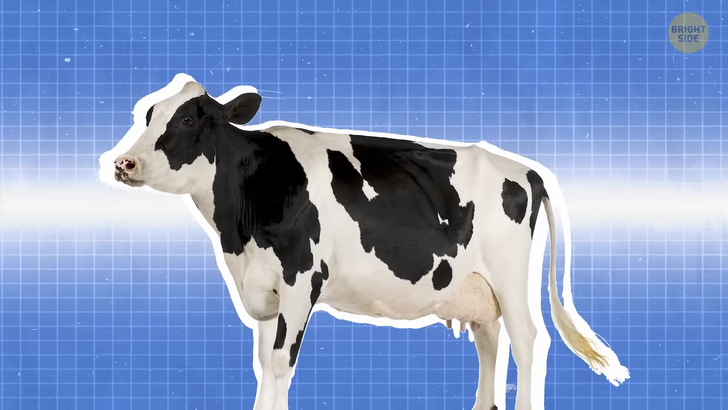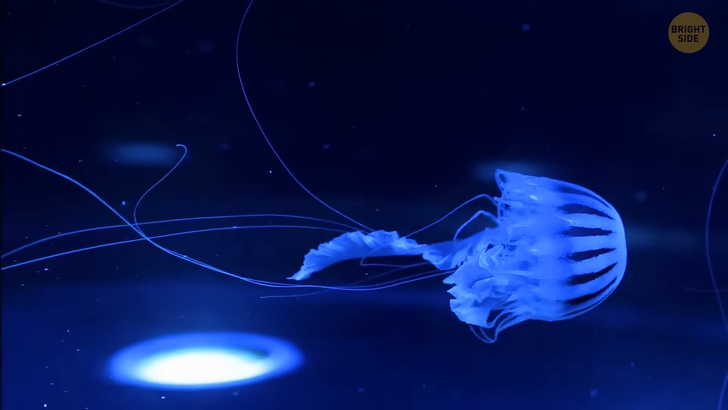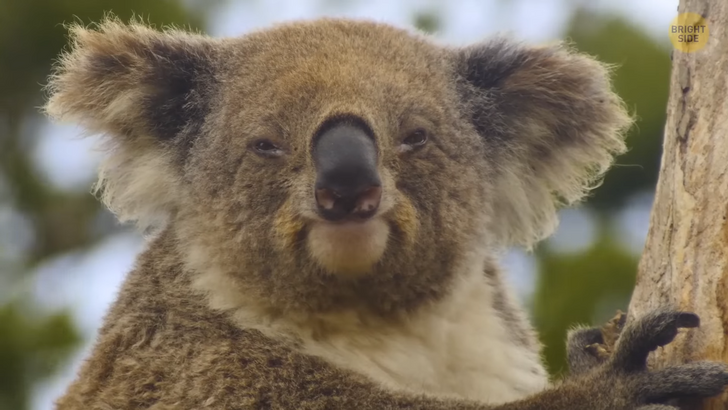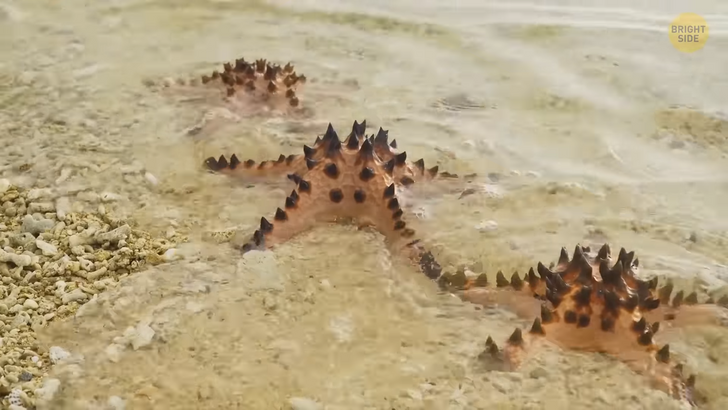A Pregnant Woman Ruined My Birthday Party, but I Got My Revenge

Picture the food chain as this huge dinner table, where every critter has its place. The problem is, they’re also available for grabs on the menu! We’ve got all sorts of living beings out there, from teensy-weensy algae to enormous blue whales, and they all have one thing in common — they need food to survive.
The way every creature manages to survive is because of this never-ending movement of nutrients in nature. Take the grass we walk on: it’s like a self-sufficient chef who cooks up its own meals using sunlight.

Then, along comes a rabbit, the ultimate grass connoisseur, and gobbles it up. A cunning fox might be right up the corner, sneaks in, and chows down on the rabbit. Now, when the fox meets its unfortunate demise, it becomes a feast for bacteria. These little critters are like the clean-up crew, breaking down the leftovers and turning it into nutrients for the soil, which, you guessed it, feeds the grass.
Of course, in this foodie paradise, there’s plenty of variety. Grass isn’t just for rabbits, and rabbits have more options than just grass. Foxes, being the adventurous eaters they are, can savor a wide array of animals and plants. And here’s the kicker: each of these quirky characters can be part of multiple food chains. All these interconnected and overlapping food chains create a wacky food web, where everyone’s connected by their appetites.

So, are humans the big shots in the food chain? That might be your first guess, but it’s a bit more complicated than that. You see, there are some mighty creatures out there like lions, gray wolves, and great white sharks. They’re top-notch predators for sure. They chow down on meat all day long, and apart from a few rare exceptions, they don’t have to worry about becoming somebody else’s dinner—except when it comes to us humans.
So, if we’re able to take down these top predators, does that mean we’re sitting pretty at the top of the food chain? Well, it all depends on how you define the word “predator.” Are you talking about taking down other animals simply for a good meal? And are we considering ancient cavemen or just modern-day folks? Our eating habits used to rely way more on meat consumption, especially in ancient times. But it may not be applicable today.
Now, in the world of ecology, which is all about studying how living things interact with each other and their environment, our position in the food chain isn’t determined by who might eat us or who we might eat. Nope, it’s all about what we choose to chow down on. So, if we were to look simply at our eating habits, then the answer is a resounding no! We humans don’t make the cut as top predators because we don’t devour everything we bring down.

Based on this, some science wizards decided to figure out where exactly humans fit in the food chain, which they call the trophic level. Scientists usually assign trophic levels on a scale of one to five. Plants — because they use the basic sunlight for energy — start at level one, while herbivores claim level two. Then we’ve got the third level gang, which dines solely on herbivores, and the fourth level crew, who feast on level-three carnivores. And the pattern continues.
As for omnivores like us, we get our trophic level score by averaging out the levels of what we gobble up, plus one. So, if you’re munching on fifty percent plants and fifty percent herbivores, you’re a level two point five-omnivore, my friend. So, armed with this data scientists went to work. They analyzed our food consumption worldwide and assigned a trophic level to each tasty treat we enjoy.
According to their study, which they published a decade ago, they found that on average, eighty percent of our daily calories come from plants, and the remaining twenty percent comes from meat and fish. So, on the trophic level scale, we land at a not-so-impressive two point twenty-one. That lands us comfortably somewhere between anchovies and pigs! The whole subject gets a bit more complex once you start traveling.
That’s because our trophic levels vary across the globe. For instance, in Burundi [br-oon-dee], plants make up a whopping ninety-six point seven percent of the local diet, giving the folks there a trophic level of two point zero four. On the flip side, in Iceland, where meat makes up around half of the diet, the trophic level shoots up to two point fifty-seven.

Now, let’s not kid ourselves. We humans pose a bigger threat to other animals than anchovies and pigs ever could. It’s no wonder other scientists argue that we’re like “super predators.” They cooked up this term to describe how fast we wipe out other species. In fact, a bunch of scientists from Canada published a report in two thousand fifteen, where they compared the hunting and fishing activities of humans with those of other land and sea predators, and guess what they found? Humans were wiping out adult prey at rates up to fourteen times higher than those other predators.
Speaking of meals you can find in the wild, scientists used to believe that jellyfish didn’t really carry their weight in the ecosystem. That’s because it was thought they’re not really as nutritious as other marine animals. Turns out, those gelatinous creatures are more than just wiggly, blobby things that float around aimlessly in our waters. They might just be like gingerbread houses for our fishy friends, offering both a tasty treat and a cozy home.
For starters, jellyfish are now known to be epic landlords for fish. These delightful fishy residents use jellyfish as their personal bodyguards against bullies of the deep, protecting them from predators that lurk in the shadows. Talk about a VIP service! But that’s not all. Jellyfish also serve up an all-you-can-eat buffet for these little swimmers, giving them the fuel they need.

This newfound discovery is flipping the script on what we thought we knew about jellyfish. They used to have a bad rap, being labeled as fierce predators that gobble up fish eggs and larvae left and right. And guess what? It’s not just some fishy business. Two-thirds of the fish species forming these unique partnerships with jellyfish are actually of commercial value. These are the big fish in the seafood industry that were once in dire straits but are now making a triumphant comeback.
The jellyfish revelations don’t stop there. Brace yourselves for an evolutionary plot twist! It seems that jellyfish associations may have led to some species of fish deciding to relocate their homes. Imagine fish packing their bags, and waving goodbye to open water habitats. Who knew jellyfish had the power to influence such life-altering decisions?
This whole food chain theory might sound like all animals are rough and primitive, waiting patiently in the dark to snatch a representative of a weaker species. But it’s not the case for all animals. Take Koalas for instance. They’re like the fine dining connoisseurs of the animal kingdom. That’s because instead of dining on just any old leaves, they have a discerning taste for the finest eucalyptus foliage.
A koala can delicately munch away on pounds after pounds of eucalyptus leaves each day. But wait, not all eucalyptus leaves make the cut! These koalas meticulously select only around twelve out of a whopping three hundred types of eucalyptus. It’s as if they have a little leafy checklist in their furry paws.

You know that nasty feeling when your tummy is angry after a large meal? Well, starfish have a unique approach to solving that problem, and it’s quite the spectacle! These funky creatures have a knack for putting their stomachs on full display. That’s right, starfish can casually stroll along the ocean floor, proudly flaunting its stomach outside its body.
You see, when a starfish spots a delectable mussel using its trusty suckers, it decides it’s time for a mouthwatering meal. But here’s where things get wacky. Instead of keeping its stomach tucked away safely inside, as you’d expect the starfish takes a bold leap and flips its stomach out to complete the digestion. Once the starfish’s stomach engulfs the mussel, it releases a special cocktail of digestive juices.











